Have you ever considered how precision sheet metal fabrication could transform the efficiency and quality of your products? This process is vital for delivering accurate, reliable components in various industries.
With a detailed focus on precision sheet metal fabrication, we bring valuable insights backed by industry-leading practices and technological advancements to better understand the complexities of this field.
Precisionsheet metal fabrication, with its emphasis on meticulous accuracy and strict quality standards, represents the highest level of industrial craftsmanship, guaranteeing outstanding outcomes in each project.
In this guide, you’ll gain insights into the essential elements of precision sheet metal fabrication, covering everything from material selection to advanced fabrication techniques.
Read on to master the art of precision metal fabrication.
1. Defining Precision Sheet Metal Fabrication
Precision sheet metal fabrication is a process that transforms flat sheets of metal into specific, complex shapes and designs meeting high standards. It relies on a combination of cutting-edge technology and skilled craftsmanship to achieve high levels of accuracy and detail. This process is critical in creating components that meet strict specifications for various industries.
The essence of precision in this field lies in its ability to produce consistent, repeatable results that adhere to tight tolerances. Techniques like laser cutting, punching, and bending are employed to manipulate metal sheets with exceptional precision. It’s a process that bridges the gap between raw materials and finished products, playing a critical role in manufacturing and engineering projects.
2. Materials Used in Precision Sheet Metal Fabrication
Bridging from the definition of precision sheet metal fabrication, materials used are crucial in determining the quality and functionality of the final product. Here are key materials commonly used:
Aluminum and Its Alloys
Aluminum is a favored material in precision sheet metal fabrication for its lightweight nature and ease of manipulation into accurate, detailed designs. Its alloys are beneficial for enhancing specific properties such as strength and heat resistance, allowing for a broad range of applications in precision fabrication. Aluminum’s non-corrosive qualities also contribute to the longevity and durability of fabricated products.
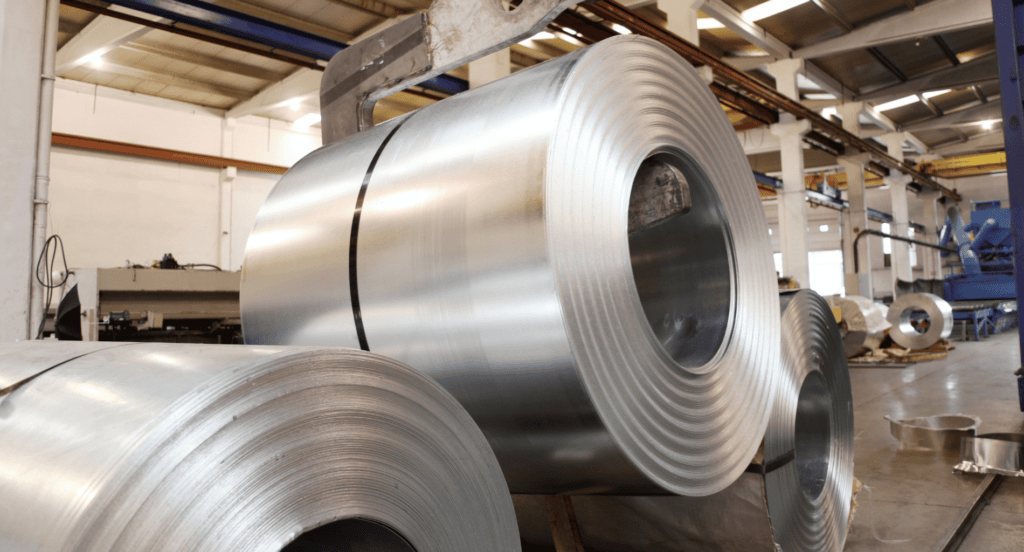
Stainless Steel
Stainless steel’s durability and resistance to corrosion makes it a vital material. Its ability to withstand extreme environments without degrading ensures long-lasting, high-quality fabricated products. The availability of various grades allows for customization of the material properties to suit specific precision fabrication needs.

Copper and Brass
Copper and brass are notable for their excellent conductivity and malleability. These materials can be finely machined and shaped, allowing for high-precision components with detailed features. Their natural antimicrobial properties enhance the usefulness of fabricated products even further.
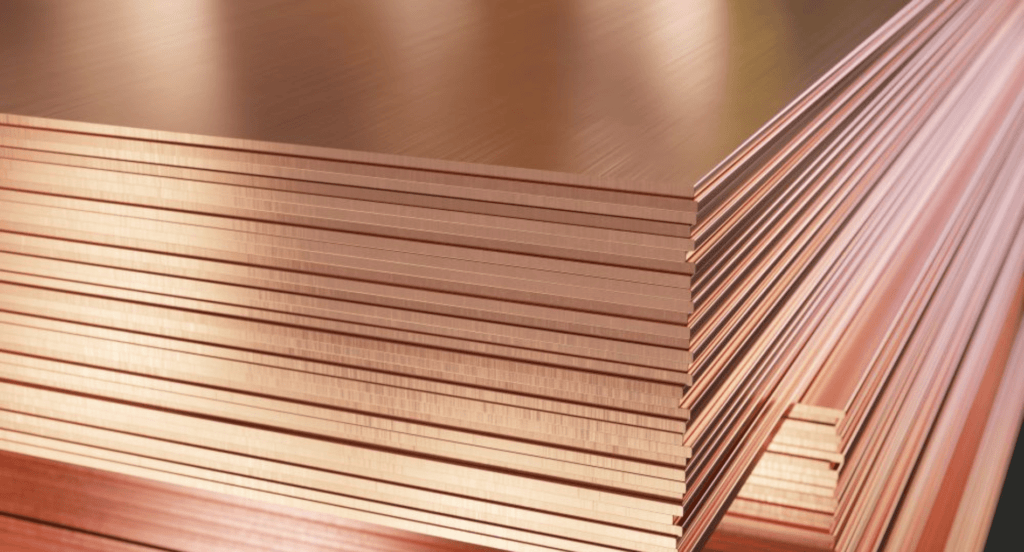
Titanium
Titanium’s strength and corrosion resistance is highly valued in precision sheet metal fabrication, with the market projected to grow at a 6.50% CAGR from 2023 to 2032 as per Precedence Research. This material is well-suited for creating complex, accurate parts that require both lightweight and strength. Its resilience and durability make it ideal for high-quality, long-lasting fabrications.

3. Core Techniques in Precision Fabrication
Transitioning from the diverse materials used, the next focus is on the core techniques that transform these materials into high-quality products. Here are the essential techniques employed:
Metal Stamping
Metal stamping is a fast and cost-effective technique for producing large quantities of complex parts. It involves using dies and high-pressure machinery to shape, cut, or form metal sheets. This method is particularly effective for producing consistent, repeatable parts, making it a go-to for large-scale production. This technique simplifies the production process yet delivers such precise results.

Roll Forming
Roll forming is a continuous bending operation in which metal sheets are passed through rolls to achieve a desired cross-section. This method is ideal for creating long, uniform products like channels or trim, offering excellent efficiency and consistency. Roll forming is particularly valued for its ability to produce parts with very little material waste.

Waterjet Cutting
Waterjet cutting uses a high-pressure stream of water, often mixed with abrasive materials, to cut metal precisely. It’s renowned for its ability to cut without introducing heat, thereby avoiding material distortion or warping. This technique is perfect for materials sensitive to high temperatures and for components requiring complex details.
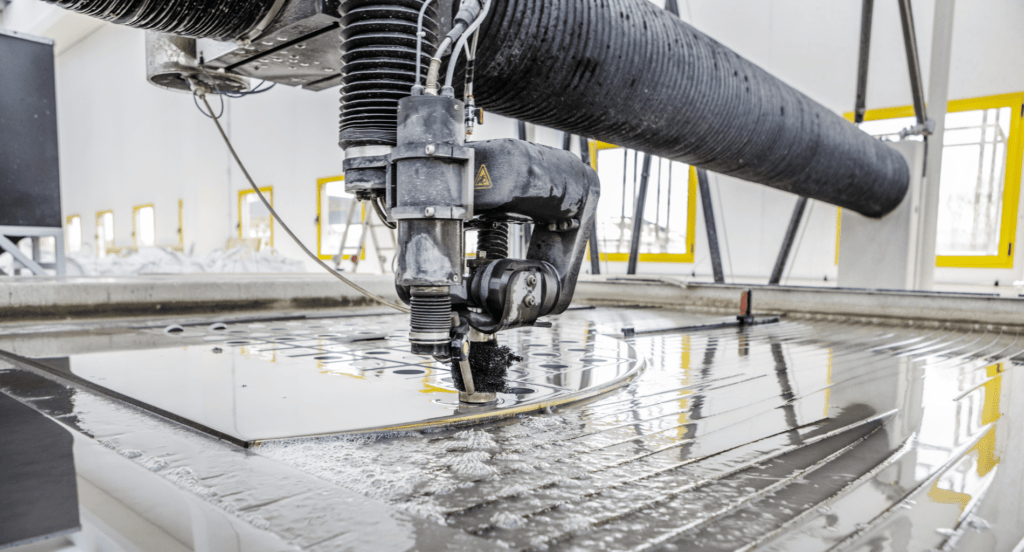
Electrical Discharge Machining (EDM)
EDM is a method that employs electrical sparks to mold metal into specific shapes. This is highly valued for its accuracy in cutting extremely hard materials or complex shapes that are challenging to achieve with traditional machining. EDM is particularly useful for detailed or delicate parts where traditional cutting tools might be ineffective.
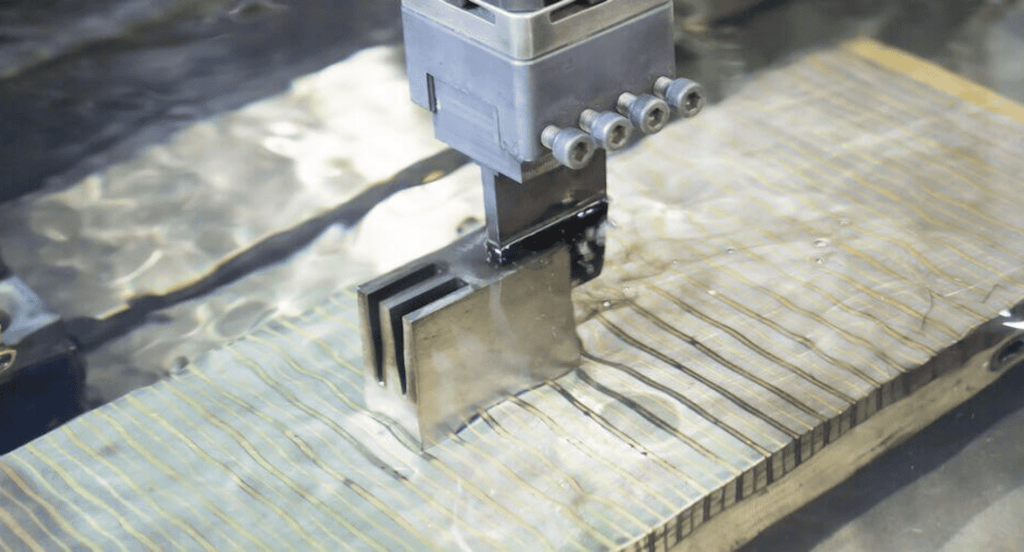
Forging
Forging involves shaping metal through focused pressure like hammering or pressing. This technique is known for producing extremely strong parts, as the process can change the metal’s grain structure. Forged parts are typically used in applications where high strength and resistance to wear and fatigue are required.
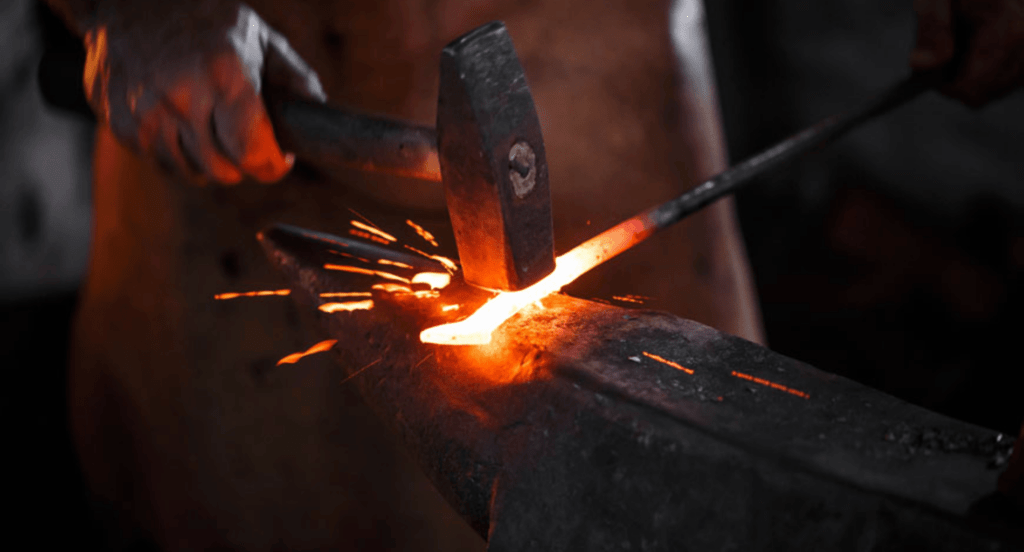
4. Applications of Precision Sheet Metal Fabrication
With the core techniques, precision sheet metal fabrication finds its importance in a range of sectors, each utilizing its precision for specific applications. Here are some of the vital sectors:
Construction and Architecture
The construction and architectural fields utilize precision sheet metal fabrication for both structural integrity and aesthetic design elements. For example, this includes the production of detailed facades, complex metalwork, and reliable structural components. The precision in these applications not only enhances the visual appeal but also ensures the safety and durability of buildings and structures.
Telecommunications Equipment
Precision fabrication is vital in the telecommunications industry for producing components like antenna structures and housing for electronic communication devices. The accuracy in these parts ensures optimal performance and longevity, crucial for maintaining strong communication networks. This precision directly impacts the reliability and efficiency of telecommunication systems.
Defense and Military
In the defense sector, precision sheet metal fabrication is used for manufacturing critical components of military hardware, such as armored vehicle panels and weapon systems. The high level of precision ensures these components can withstand extreme conditions and provide reliable performance in critical situations. This accuracy is vital for the safety and effectiveness of military equipment.
Transport Infrastructure
Transport infrastructure heavily relies on precision fabrication for creating key components like railway tracks, bridge supports, and airport structures. This is essential for ensuring the safety, durability, and efficient operation of transport systems. Accurate fabrication in these applications contributes to the overall stability and reliability of public transportation networks.
The table below showcases how precision fabrication plays a critical role in the development of various transport infrastructure components, underscoring its importance in enhancing safety, durability, and efficiency within public transportation systems.
| Transport Infrastructure Component | Role of Precision Fabrication |
| Railway Tracks | Ensures the tracks are perfectly aligned and uniform for safe train operations. |
| Bridge Supports | Guarantees the structural integrity and load-bearing capacity for long-term durability. |
| Airport Structures | Provides the necessary precision for aerodynamic designs and robustness against environmental factors. |
| Tunnel Linings | Ensures watertight and secure enclosures for safe underground transport routes. |
| Highways | Facilitates smooth road surfaces and precise alignments for efficient vehicle flow and safety. |
5. Safety Practices in Metal Fabrication
Continuing from its application in various industries, understanding the safety practices involved is crucial to ensure the integrity and efficiency of the process. Here are the essential practices:
Personal Protective Equipment (PPE)
The use of appropriate personal protective equipment is critical in metal fabrication. It includes items like safety glasses, gloves, and ear protection to safeguard against injuries from sharp edges, sparks, and noise. Regular training and strict adherence to PPE protocols are essential to maintain a safe working environment.
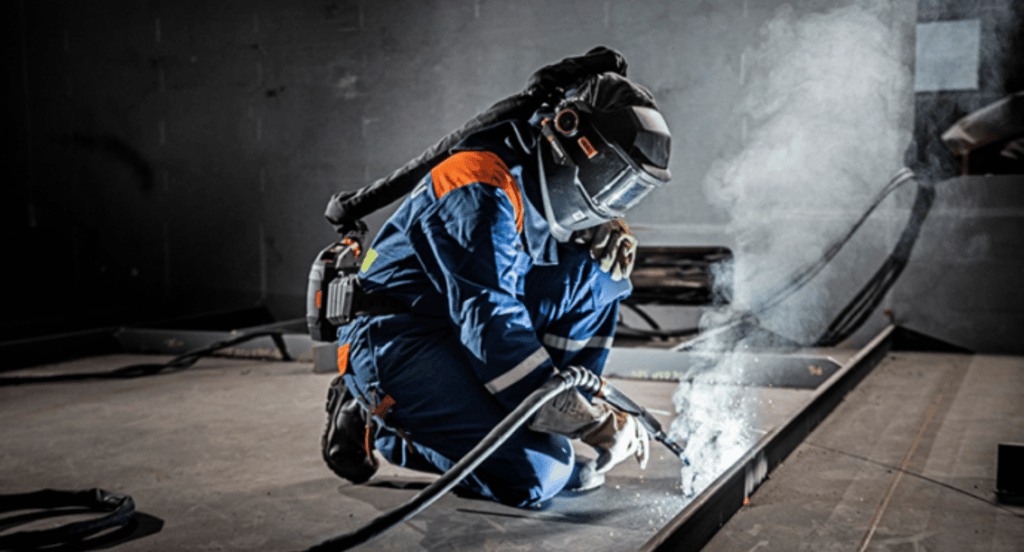
Machine Guarding
Machine guarding, using guards and safety barriers, is crucial for safeguarding operators against hazards created by moving parts like blades and belts in the fabrication machinery. Regular inspections and maintenance of these guards ensure their effectiveness and the safety of the operators. Zemetal implements safety measures in its processes, ensuring the highest standards of operator safety.

Fire Safety and Prevention
Given the high temperatures and sparks generated in metal fabrication, fire safety is critical. This involves having proper fire extinguishers, training staff in fire response, and maintaining a clean workspace to reduce fire hazards. Regular drills and safety checks can significantly minimize the risk of fire-related incidents.
Material Handling
Safe material handling practices are crucial to prevent injuries from lifting heavy metal sheets and components. This includes using appropriate lifting equipment, training workers in safe lifting techniques, and organizing the workspace to minimize the need for manual handling. Efficient material handling not only enhances safety but also improves productivity.
Emergency Procedures
Having well-defined emergency procedures and training all staff in these protocols is essential for handling unforeseen incidents. This includes first-aid training, knowing the location and usage of emergency equipment, and having clear evacuation routes. Regular drills ensure that in the event of an emergency, everyone knows the appropriate actions to take.
6. Challenges and Solutions in Precision Fabrication
After exploring the safety practices, addressing the obstacles faced in precision fabrication is essential for optimal outcomes. Here are some of the problems and their respective solutions:
Tolerance and Precision Issues
In precision fabrication, maintaining exact tolerances is challenging due to variations in materials and limitations in machine precision. The solution lies in utilizing high-precision equipment and implementing strict quality control measures. Regular training for technicians further ensures adherence to tight tolerance specifications.
Equipment Maintenance
Keeping fabrication equipment in optimal condition can be tough due to the constant wear and complex machinery involved. Proactive and regular maintenance schedules, along with timely upgrades, are crucial to ensure uninterrupted production. This approach not only extends the equipment’s lifespan but also enhances overall operational efficiency.
Quality Control
Consistently maintaining high-quality output is difficult due to varying factors like material quality and human error. Implementing rigorous quality control protocols and utilizing advanced inspection technologies can effectively address this challenge. Consistent training and regular process audits continue to demonstrate a strong dedication to maintaining high-quality standards.
Supply Chain Management
Managing supply chain effectively can be quite a challenge due to factors like supplier reliability and market fluctuations. Establishing strong relationships with multiple suppliers and adopting flexible inventory management systems can reduce these issues. This strategic approach ensures a steady supply of materials, avoiding production delays.
7. 4 Tips for Choosing a Precision Sheet Metal Fabricator
Considering the challenges it has, selecting a precision sheet metal fabricator is a critical decision that directly impacts the success of every project. Here are the essential aspects to consider:
#1 Assessing Technical Capabilities
Evaluating a precision sheet metal fabricator’s technical skills is critical for handling the complexity and precision of project demands. It ensures they can meet project needs, such as complex cutting and precise bending, to the expected standards. For example, a fabricator with advanced laser cutting machines and skilled operators can efficiently handle detailed designs to meet project specifications.
#2 Evaluating Quality Assurance Practices
Quality assurance is important in determining the consistency and reliability of the fabricated products. A fabricator with strict quality control measures will produce components that consistently meet or exceed industry standards, ensuring the longevity and performance of the end product. This evaluation safeguards your investment and maintains the integrity of your project.
#3 Understanding Delivery and Turnaround Times
Timeliness is critical in maintaining project schedules and meeting market demands. Assessing a fabricator’s capacity to deliver on time ensures that the project timelines are followed, preventing costly delays. A reliable turnaround time is a key factor in maintaining the efficiency and profitability of the operations.
#4 Considering Cost and Value
Cost considerations should balance affordability with quality and service. A fabricator offering competitive prices while maintaining high standards adds value to the project. This ensures a cost-effective solution without compromising on quality, enhancing the overall return on the investment. Zemetal provides cost-effective yet quality-driven solutions, ensuring that affordability aligns with superior craftsmanship.
Conclusion
Exploration of precision sheet metal fabrication reveals a world of detailed techniques and critical considerations vital for high-quality production. This comprehensive overview aids in broadening your understanding of this essential process for the improvement of your offerings and design strategies.
If you are exploring advanced solutions in precision sheet metal fabrication, Zemetal offers the expertise and service you need. Contact us to explore how our customized approach can benefit your business.
Dive Deeper Into Our Resources
For some insightful reads, we’ve curated a list of recommended articles just for you:
Still haven’t found what you’re looking for? Don’t hesitate to contact us. We’re available around the clock to assist you.








